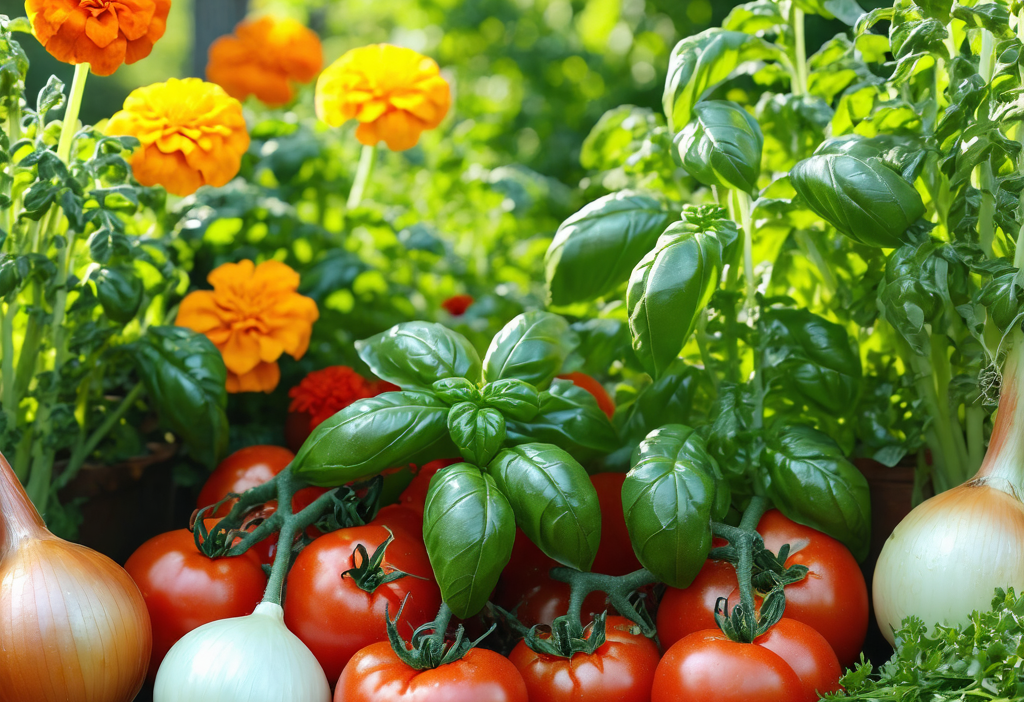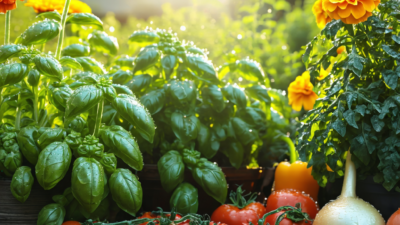Discover the Ancient Practice of Companion Planting
Gardening is more than just planting seeds and waiting for results—it’s about creating a harmonious ecosystem where plants thrive together. One of the most fascinating aspects of gardening is companion planting, an ancient practice that has been used by farmers and gardeners for centuries to maximize yields and promote healthy growth. In this blog post, we’ll explore the art of companion planting and how you can use it to create a thriving garden.
What Is Companion Planting?
Companion planting is the practice of growing different plants together in a way that benefits both species. This can be achieved through a variety of methods, including pest control, soil improvement, and providing shade or support. The idea is to create a balanced ecosystem where each plant contributes to the health and productivity of the others.
For example, planting marigolds alongside tomatoes can help repel pests like aphids and whiteflies, while also attracting beneficial insects like ladybugs. This not only protects your tomatoes but also creates a more diverse and resilient garden ecosystem.
The Benefits of Companion Planting
Companion planting offers numerous benefits for both plants and gardeners:
- Pest Control: Certain plants release natural chemicals that repel pests or attract beneficial insects. For instance, nasturtiums can deter aphids from attacking nearby plants.
- Soil Health: Plants like legumes (e.g., beans and peas) fix nitrogen in the soil, enriching it for other crops to use.
- Shade and Support: Taller plants can provide shade for shorter ones, while climbing plants can use taller varieties as supports. For example, pole beans can climb up corn stalks while also fixing nitrogen in the soil.
- Better Yields: By creating a balanced ecosystem, companion planting can lead to healthier plants and higher yields.
Popular Companion Planting Combinations
Some of the most effective companion planting combinations include:
- Tomatoes and Basil: Basil repels pests like aphids and mosquitoes, while also enhancing the flavor of tomatoes.
- Carrots and Onions: Onions repel carrot flies, while carrots help break up the soil for onions to grow more easily.
- Pole Beans, Corn, and Squash: This classic trio is known as the “Three Sisters.” The beans fix nitrogen in the soil, the corn provides support for the beans, and the squash acts as a natural mulch by shading the soil and retaining moisture.
How to Start Companion Planting
If you’re new to companion planting, here are some tips to get started:
- Research Local Pests: Identify the common pests in your area and choose plants that can help control them.
- Plan Your Garden Layout: Sketch out a plan for your garden, considering which plants will grow well together. For example, place taller plants on one side of the bed so they don’t shade shorter plants excessively.
- Experiment: Companion planting is as much an art as it is a science. Don’t be afraid to experiment with different combinations and observe what works best in your garden.
Avoiding Mistakes in Companion Planting
While companion planting can greatly enhance your garden, there are some common mistakes to avoid:
- Overcrowding: Ensure each plant has enough space to grow. Overcrowding can lead to competition for resources and increased pest pressure.
- Poor Soil Preparation: Companion planting doesn’t mean you can neglect soil preparation. Make sure your soil is rich in organic matter and properly amended before planting.
- Ignoring Plant Growth Stages: Some plants may outgrow their companions or shade them too much. Monitor your garden regularly and adjust as needed.
Maximizing the Success of Your Companion Planting Efforts
To get the most out of companion planting, consider these advanced techniques:
- Intercropping: This involves planting two or more crops in alternating rows. For example, you could plant rows of beans and corn alternately to maximize space and benefit from mutual support.
- Poly cropping: This is similar to intercropping but involves growing multiple crops in the same area at the same time. This can help create a more complex ecosystem that is resilient to pests and diseases.
- Succession Planting: Plan your garden so that one crop follows another, ensuring continuous companion planting benefits throughout the season.
Conclusion: Embrace the Natural Harmony of Companion Planting
Companion planting is a timeless practice that allows you to work with nature rather than against it. By carefully selecting plants that support and benefit each other, you can create a garden that is not only productive but also beautiful and resilient. Whether you’re growing vegetables, herbs, or flowers, companion planting offers a way to enhance your gardening experience while promoting environmental sustainability.
So why not give it a try? Start small with some simple combinations and gradually expand as you gain more experience. The rewards of a thriving, harmonious garden will be well worth the effort!





